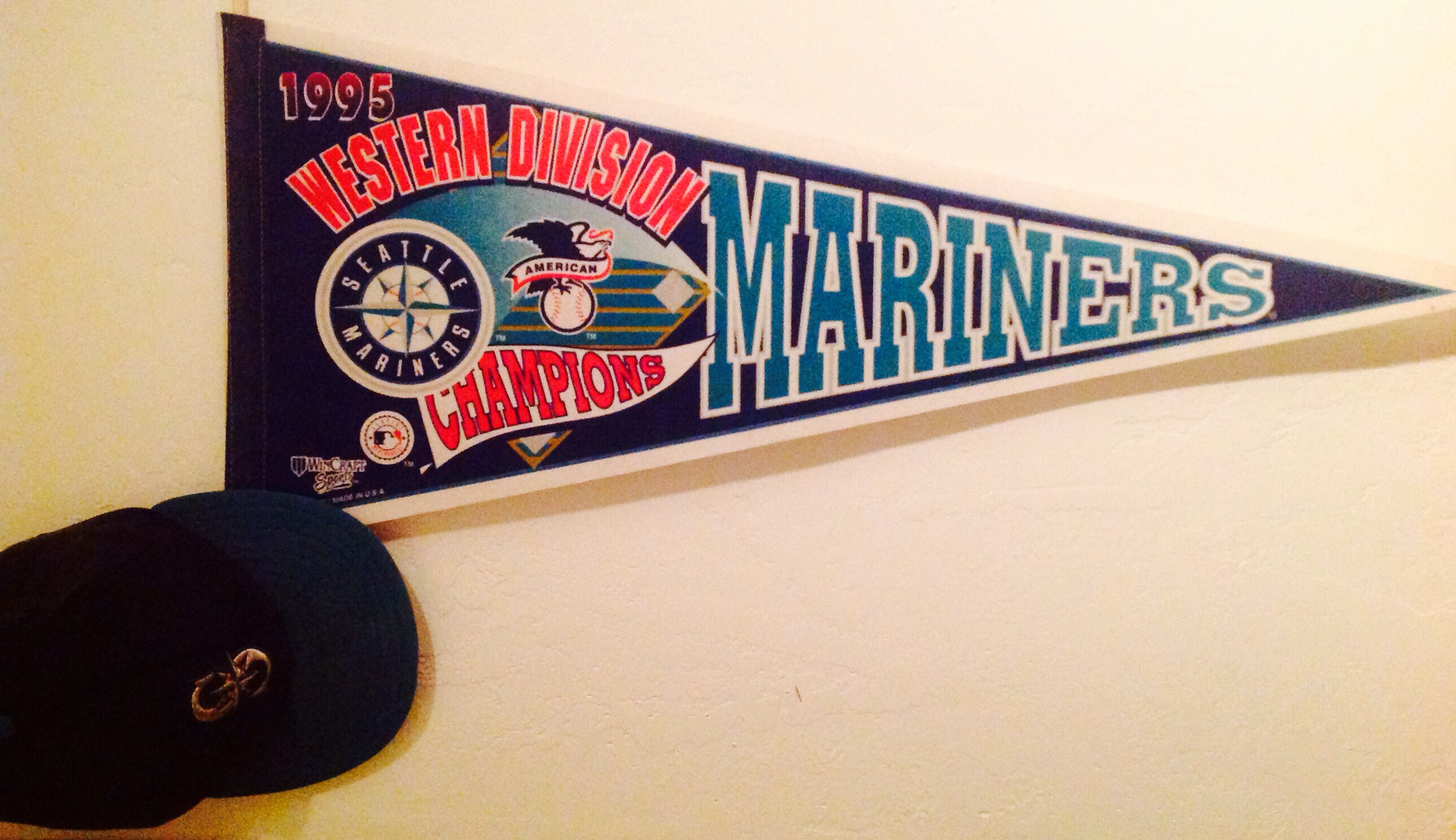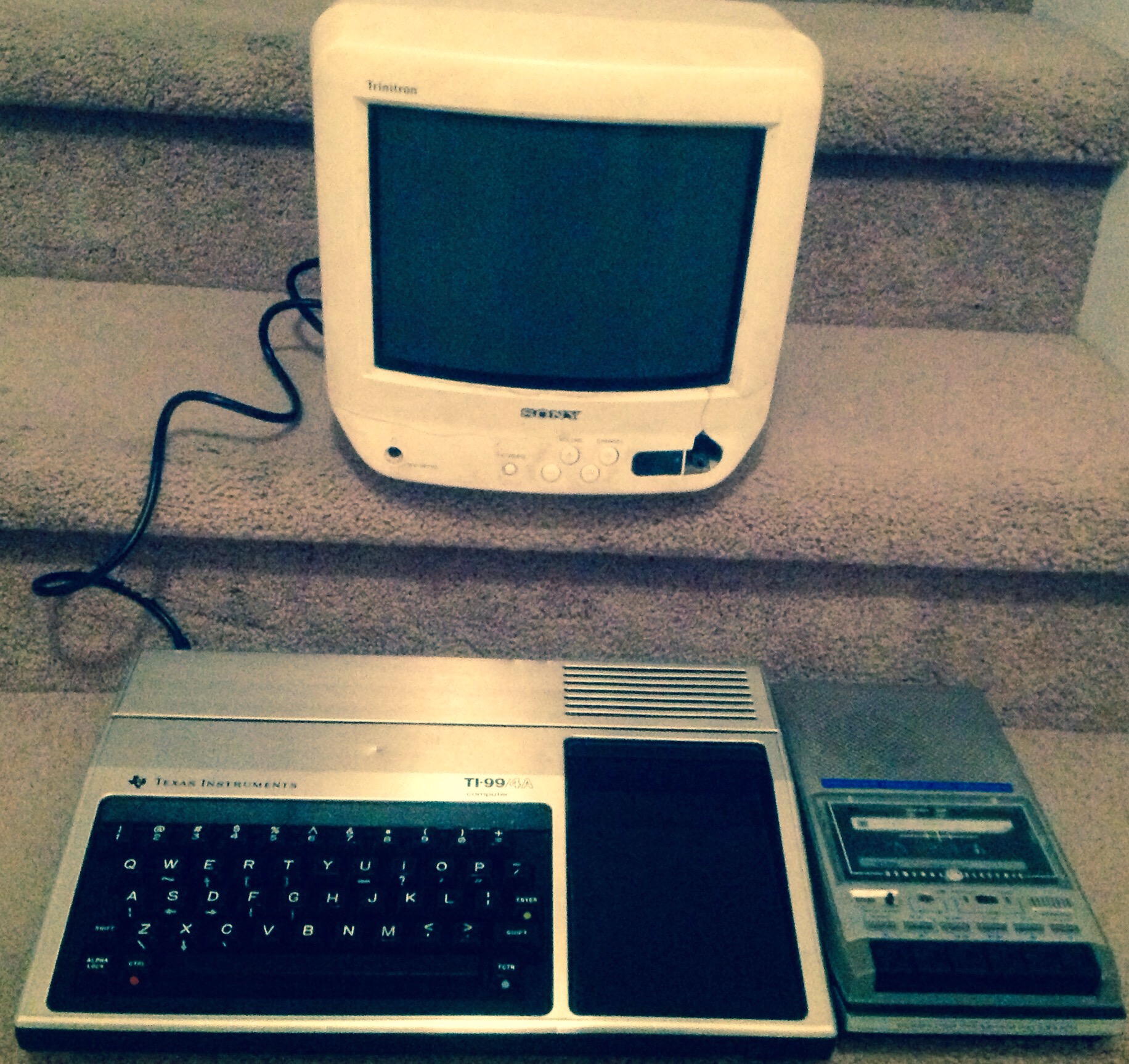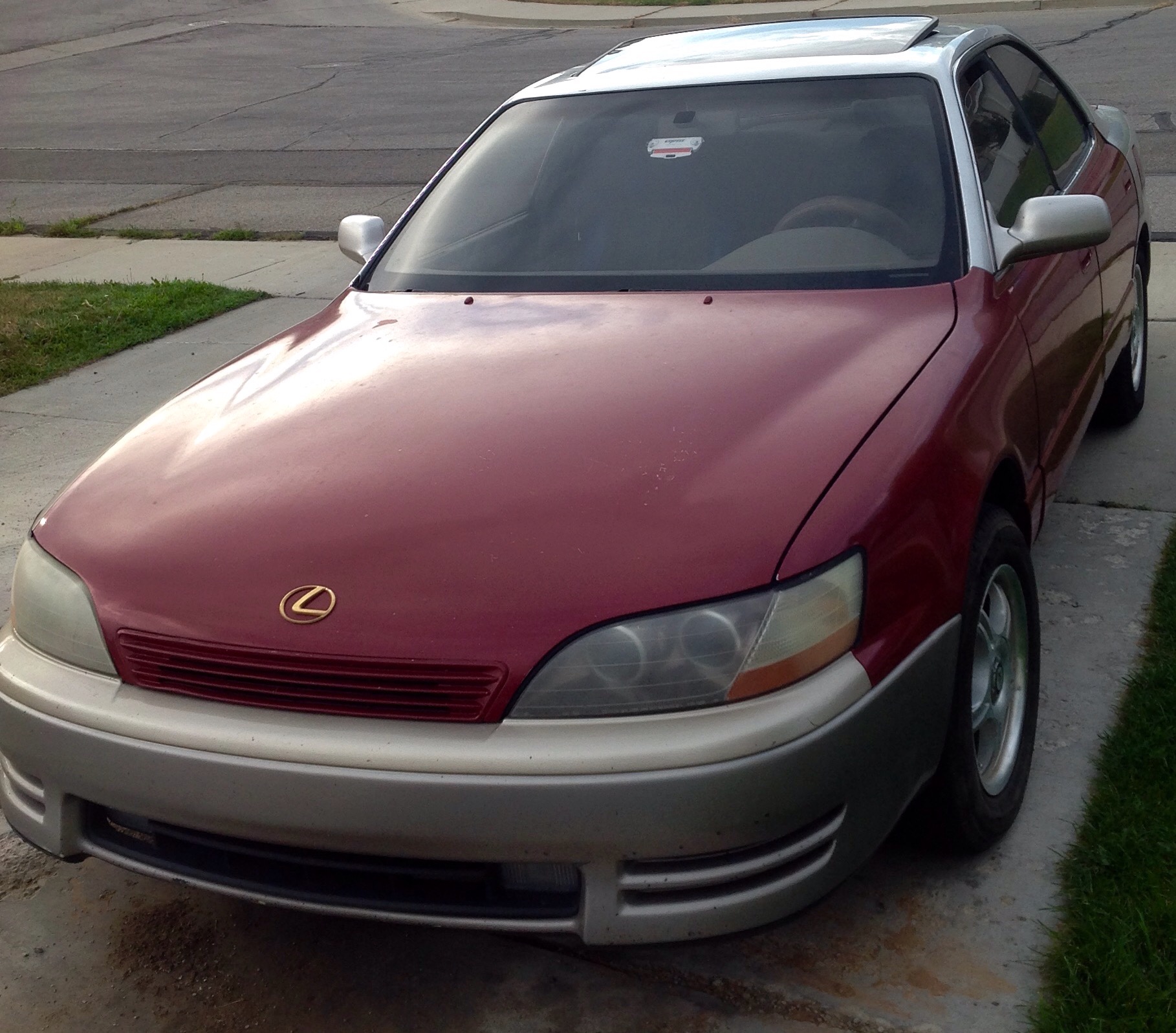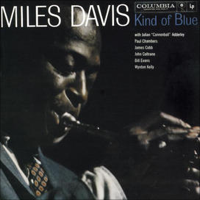You’ve probably never heard of Roj Nemmenuh. He was killed outside New York City. The primary suspect in his murder was a robot.
Or rather it’s more accurate to say that he will die outside of New York City in the distant future. About 3,000 years in the future.
I suppose it might be even more accurate to say he died outside of New York City back in June 1954. That was the year that Isaac Asimov’s “The Caves of Steel” was first published. Solving Roj’s murder is the main plot point of the story. The story takes place on earth where most people dislike and distrust robots.
 I was reminded of this story this week.
I was reminded of this story this week.
A robot killed a man last week near Kassal Germany. According to the reports,
The robot grabbed and crushed the technician against a metal plate.
We don’t even know his name, the unfortunate victim. They haven’t released it yet. The Volkswagon plant is installing robots that will work alongside humans on the assembly line. This particular robot was designed to work in a cage that keeps people a safe distance. But, the fact remains that this man died at the hands of a robot.
The famous science fiction writer Arthur C. Clarke (author of 2001 A Space Odyssey) said it’s much easier to write fiction set 500 years in the future than science fiction set 50 years in the future. The near future keeps changing too fast for writers to keep up. Just look at Star Trek and how many of the innovations have come to pass.
Asimov’s robots, set so far in the future would have never done what the robot did last week. They couldn’t. Asimov’s robots were physically incapable of harming a human, or through inaction causing a human to come to harm. It’s the first law of Robotics. . . in Asimov fiction anyway.
- A robot may not injure a human being or, through inaction, allow a human being to come to harm.
- A robot must obey the orders given it by human beings, except where such orders would conflict with the First Law.
- A robot must protect its own existence as long as such protection does not conflict with the First or Second Laws.
Asimov’s robots were far more advanced than today’s robots. The really advanced ones looked just like a person. Today, I guess we’d call them androids.
The Caves of Steel, despite being set thousands of years in the future, has no computer in the story. The world had only a few computers in 1954 and they were the size of small houses. The personal computer wasn’t invented until 1980. Asimov predicted the rise of the computer. He invented his own version of a computer to power his robots. They had something called a positronic brain. Today, we would see this literary device as a computer. The reason the positronic brain is important to the story, is that in addition to allowing the robots to function, the three laws were built into the nero-framework. His robots were both incredibly powerful and extremely limited.
The majority of robots we have today are not humanoid style robots. The industrial robot that killed the man in Germany had no head. It had a single arm. It certainly didn’t have a positronic brain. Volkswagan is still investigating the cause of what they are calling a tragic accident. Everyone agrees that the robot killed him, the question is what went wrong.
No one will accuse the robot of murder, even if the investigation finds fault with the machinery. We have built our army of robots, but unlike Asimov’s robots we’ve not embued them with a reverence for human life. Futurists fear that as robots become more powerful, and achieve faster processing power, that they will eventually push humans out of the workforce and out of the decision making process.
It scares many people.
Isaac Asimov predicted that too.
Rodney M Bliss is an author, columnist and IT Consultant. His blog updates every weekday at 7:00 AM Mountain Time. He lives in Pleasant Grove, UT with his lovely wife, thirteen children and grandchildren.
Follow him on
Twitter (@rodneymbliss)
Facebook (www.facebook.com/rbliss)
LinkedIn (www.LinkedIn.com/in/rbliss)
or email him at rbliss at msn dot com(c) 2015 Rodney M Bliss, all rights reserved
If you’ve read this blog much, you know that I have 13 kids. It’s right there in my signature block. A couple things you should know about having that many kids.
- Having more kids hasn’t given me any extra insight into how to be a better parent
- Having 13 kids isn’t 4 times harder than having 3: it’s more like 4.33 times harder
But, I am convinced that selfish parents are the best parents.
At your work do you have to work with other teams? I do. I do it a lot. For example, I got a request earlier this week for a rush job on setting up a new phone line for a line of business we are expanding into. Normally, it takes 5 days for my Telecom team to set up the phone line.
Jake, the client is asking if we can rush through a new line. How quickly could you get it configured for me once I get you the details?
Five days.
Yeah, I know the service level agreement says five days, but you always get it done sooner.
True, but I’m only going to commit to meeting our 5 day agreement.
But, you’ll PROBABLY get it done sooner right?
Yeah. . .Probably.
Jake will likely get my request done within 30 minutes. Possibly within five. But, he will only publically commit to five days.I know exactly why Jake won’t commit to anything less than five days. He’s selfish. But, he’s selfish in a way that I completely understand.
By holding to the five day target and then getting it done sooner, MUCH sooner, Jake does two things.
- Keeps his options open in case he can’t get it done sooner
- Looks like a total stud hero for beating his schedule so dramatically
Jake is my friend. He wants to help me, and he will most likely help me absolutely as quickly as he can once I give him the information. However, he’s also answerable to his management. He is going to structure our interactions in such a way that it makes him look good, or at least keeps him from looking bad. He’s more interested in his job than my job.
Because he puts himself first, I trust him. I trust him much more than if he tried to convince me that he was actually putting my needs before his.
People are in business to make money. That’s why we work. If someone tries to convince me that they are putting me ahead of them, I don’t believe them. Because they are probably lying. But, when someone says that they are willing to help me, but they put their own needs first, that makes perfect sense to me.
I like working with that kind of selfish people. I understand them, and I trust them.
My kids are from all over the world; China, India, Columbia, Haiti, USA. My wife and I have adopted kids and we have birth kids. (BTW, it’s considered rude to refer to birth children as “real” children. What’s that make the adopted kids, fakes? The polite term is “bio kids,” or “birth kids.”)
Over the years we have been very involved in the adoption community. We have lots of friends who have adopted kids. In my experience people adopt kids for one of two reasons
- UNSELFISH: They want to rescue a child or children from the devastation of poverty, or foster care, or war, or whatever. Save the children.
- SELFISH: They just want a bigger family and adoption is the course they pick.
Option 1 almost always ends in tragedy. Because, as any parent can tell you, your kids, like my kids, like all kids are going to screw up. And as they become teenagers, their screwups somehow become your, our, MY fault. Your kids are going to break things. They are going to lie to you. They are going to disappoint you. It’s what they do. They’re kids.
The people who adopted for reason #1, the unselfish people are going to have a hard time dealing with ungrateful children. They are naturally going to think, “Don’t you know how much better off you have it than in that orphanage?” I’ve seen parents become resentful, disillusioned even.
The people who adopted for reason #2, us selfish people are also going to have kids that screw up, that lie, that disappoint us. And we’ll think, “Yep. That’s what kids do. . .no go to your room.”
So, whether it’s in business or families, go with the selfish option.
Rodney M Bliss is an author, columnist and IT Consultant. His blog updates every weekday at 7:00 AM Mountain Time. He lives in Pleasant Grove, UT with his lovely wife, thirteen children and grandchildren.
Follow him on
Twitter (@rodneymbliss)
Facebook (www.facebook.com/rbliss)
LinkedIn (www.LinkedIn.com/in/rbliss)
or email him at rbliss at msn dot com(c) 2015 Rodney M Bliss, all rights reserved

It’s gotten a little warm in Utah. This was the temperature when I got to my car today. Yesterday was worse at 108. It’s been like this for almost a week. Tomorrow it might cool down into the upper 90’s. The air conditioner in the car we now all call Iron Man is not working. But, I don’t care.
As some of you may remember, I spent a lot of time earlier in the Spring “fixing” this car. I did a partial engine rebuild. I swapped out various body parts. I replaced just about every pump in the entire contraption. It kept breaking.
Yesterday, I spent 4 hours on a conference call. Mostly, I was listening to dead air. But, something broke on my call floor. It was a client issue, meaning my engineers couldn’t fix it, and I had to wait on the conference call until the client fixed it. That happens a lot. Way more than it should.
Our systems at work are very complex computer networks. Our private network spans 4 states and is used by over 1,000 of my agents and countless more at other suppliers. A system that complex is going to break at times. When it breaks, it doesn’t matter what I’m doing, that becomes my #1 priority.
The systems in my car are not nearly as complex. But, it still felt like everytime I turned around something was breaking. Sometimes it was the stuff I’d just fixed. I was dreading the hot weather. In the past, my car has had coolant problems. In fact, after we did the partial engine rebuild, we nearly didn’t make it back from our test drive because the engine overheated. Turns out it was air bubbles in the coolant system.

A picture of the coolant overflow.
Then, just a few weeks ago, the radiator started spitting fluid all over the inside of my engine compartment. A seal had burst and we had to put in a new radiator.

The radiator is the long shiny black and silver thing at the bottom of the picture.
As the weather heated up this week, I started getting more and more nervous to drive my car. I watch the gages like a hawk. I try to keep the RPMs below 3000. I baby it.
I’m not sure I need to. So far, the car has handled the heat like it was made for it. I haven’t added a drop of radiator fluid in weeks; not since replacing the radiator. The engine is performing admirably. And that’s what scares me a little bit. Could it be that I actually “fixed it” once and for all? It’s possible that my coolant problems are over. If that’s true, it’s worth some inconvenience with the AC.
I typically drive with the sunroof open and my windows down, even on the freeway. But, the heat has driven me to change my approach. Now, I leave the sunroof slightly cracked and the windows rolled up, and the air conditioning on. When you turn on the AC do you notice that your car revs its engine just a little bit? That’s by design. The AC puts a strain on the engine. The car is supposed to be smart enough to compensate for the AC. Somewhere along the line, mine lost it’s mind. The AC works while the car is moving, but if I stop, the AC will kill the engine.

It’s not a critical error, and when the temperature goes back down, so will my windows. And I’m just so happy that the cooling system for the engine works, that I don’t even care about the AC. . .much.
Rodney M Bliss is an author, columnist and IT Consultant. His blog updates every weekday at 7:00 AM Mountain Time. He lives in Pleasant Grove, UT with his lovely wife, thirteen children and grandchildren.
Follow him on
Twitter (@rodneymbliss)
Facebook (www.facebook.com/rbliss)
LinkedIn (www.LinkedIn.com/in/rbliss)
or email him at rbliss at msn dot com(c) 2015 Rodney M Bliss, all rights reserved
Tonight at 6:00 PM MST the earth will bestow a gift on humanity. The gift will be worth approximately six hundred and fifty thousand dollars. And your computer is going to hate it.
“Dost thou love life? Then do not squander time, for that’s the stuff life is made of.”
? Benjamin Franklin
The earth is slowing down. Not by much. But, like all of us, every year it gets a little slower. But, we need the clocks to stay in sync. It might seem like a silly thing, but 25 times in the last 43 years, the scientists who track such things have added an extra second to the calendar.
Normally they do it at midnight on a weekend. Or New Year’s Eve. This year, they’ve decided to do it right in the middle of the week. So, tonight, 5:59:59 will be followed by 5:59:60 which will be followed one second later by 6:00:00. Your clock won’t change of course. No one is going to worry about the clocks on our microwaves, cars or desk or wall clocks.

But, it’s a different story for your computer and your cell phone. To a computer, a second is a really, REALLY long time. My computer runs at 3.2 Ghtz. That’s 3.2 x 10^9. Or 3,200,000,000. That is how many “cycles” the computer executes each second. Over 3 BILLION instructions. . .every second.
A second is a really long time to a computer.
And computers don’t do well with change. Computers really like to know exactly what time it is. There’s even a network protocol called the NTP, Network Time Protocol that is specifically set up to synchronize time. There’s a master clock in Colorado that everyone else talks to. So, when we just decide to throw an extra second at the system, there’s lots that could go wrong.
Different computer service providers are approaching the problem in different ways. Some plan to take systems offline during the additional second. Other’s plan to slice the extra second up into 86,400 little pieces and add a tiny sliver of time to each second today. by the time they reach 6:00 PM, they’ll be all caught up. This is Google’s plan, for example.
You probably won’t notice anything. However, if your bank, or your ISP, or one of the other companies that you communicate with via the internet announces they are having “maintenance” tonight, you can assume they are offline so that one second doesn’t screw up their computers.
I hate SPAM. Not the canned meat, although that’s not my favorite. I’m talking about the email variety. Very early in my career I made the mistake of intentionally sending an email to the entire WordPerfect company. I sent a Christmas email that simply said,
Tis the season. Fa La La
I was rightly reprimanded. A friend who was wiser than I was pointed out how expensive my useless email was. WordPerfect had about 5000 employees. Assuming it took each person 5 seconds to read and delete my email, here’s the math:
5000 people times 5 seconds per person equals 25,000 seconds. That’s about 7 hours. So, my email sucked a full day out of the company’s productivity. That’s a big part of the reason I hate spam.
Tonight, everyone in the world gets an extra second. Here’s the math
Seven billion people times 1 second equals 7,000,000,000 seconds, or 1,944,444 hours, or 81,018 days, or 221 years.
If we assign a value to that time, let’s say $8/hour to make the math simple, that equates to $648,148. If you have to work past 6:00 PM tonight, your employer gets that extra time. If you aren’t working at 5:59:60, you get to keep the change.
It’s a holiday week in the US, so enjoy your tiny extra slice of life.
Rodney M Bliss is an author, columnist and IT Consultant. His blog updates every weekday at 7:00 AM Mountain Time. He lives in Pleasant Grove, UT with his lovely wife, thirteen children and grandchildren.
Follow him on
Twitter (@rodneymbliss)
Facebook (www.facebook.com/rbliss)
LinkedIn (www.LinkedIn.com/in/rbliss)
or email him at rbliss at msn dot com(c) 2015 Rodney M Bliss, all rights reserved
I’m slow. I’m not afraid to admit it. A man should know his limitations. This summer I’ve hiked slot canyons in Southern Utah, I’ve rafted the Arkansas River in Central Colorado and just last week I biked eight miles over rough trails in the Wasatch mountains.
And what I’ve learned, or rather had reaffirmed, is that I am not fast.
I started out my career thinking for a long time that I wanted to be a programmer. I studied Computer Science at Brigham Young University. I’ve been playing with, and coding computers since I was a kid in the early 1980’s. I discovered something during my third year of college.
I am not fast.
It was a tough realization to come to. There are aspects of programming that I absolutely love and I’m really good at. Architecture is one of my strengths. I can start with a blank sheet of virtual paper and very quickly design the layout that a program should have. I can identify the procedures, scope out the classes, define the needed variables. I have a friend who is a very good programmer who can’t do those things.
Rodney, I stink at that initially starting piece. The blank page freezes me. But, you’re great at it. The piece that I don’t understand is how you can be so good at the design and so slow at the actual coding.
Did I mention he’s my best friend? Only a true friend would lay it out for you like that.
I kept up better on our bike ride than I typically do on a hike. That was probably because on an “out-and-back” ride, where you ride back on the same path you road out on, you end up with as many down hills as up. I’m pretty good going down hill.
Well, mostly. During our ride we came to the first big hill. The irony of mountain biking, is that it’s often scarier going downhill, when you don’t need to peddle than it is going uphill. The worst that happens going uphill is that you only make it part way up the hill and you have to get off and walk. The worst that happens going downhill is that you end up taking a header over the handlebars onto the rocks.
The Scoutmaster, an accomplished mountain biker went down first. He’s really good. So good that most of the boys immediately got off their bikes and started walking/sliding them down the hill. Soon it was just me and the other assistant, who’s also really good.
So, are you going to ride or walk, Rodney?
Okay, maybe it was a little pride. Maybe it was the fact that my bike was a 20 year old steel frame bike with fraying rubber on the tires and his was a new carbon fiber one. Or that he was wearing bicycle shorts and a helmet and I was wearing blue jeans, boots and a floppy hat.
I think I’ll give it a go.
While you are riding down a hill, you do very little with your feet, except stand on the pedals. You’re hands are completely occupied with braking and steering. That leaves no hands free to deal with your floppy hat falling down in front of your face.
Half way down the hill, it slipped forward and completely obscured my face. I got to see how good my short term memory was. “Where were those rocks?” “The trail bore right, didn’t it?” Meanwhile, I’m shaking my head like crazy trying to get rid of my precious battered felt hat, realizing the guys who wore helmets didn’t have this problem.

Like I said, I can be a little slow.
I made it, barely.
In business that’s not an option. I couldn’t pursue a profession where I was going to make it, barely. I can code, but I’m not a programmer. Because here’s the irony of waiting for the slow kids.
During our two day hike last month up into the foothills of Mt Timpanogos, I, as usual was with the last group. At times I was the last group. But, generally there was at least one or two boys that were hiking at my snail’s pace. Hiking 4,000 feet of vertical elevation, wearing a 35 lbs pack is hard. Even guys who are fast and in great shape are going to feel the effects. I’m neither fast nor in great shape.
Even though our group was hiking along a trail that had only one starting point and one ending point, (meaning it was literally impossible to get lost unless you fell off the side of the mountain,) the lead group would occasionally stop to let the slower kids (me!) catch up. Here’s how it looks from the perspective of the fast group.
Hey guys, let’s take a breather and let the rest of the group catch up.
They then drop their packs, drink their water, take a short nap, until the slow group comes into view.
Alright guys, get your packs back on. Someone wake up Jeremy. Let’s get moving.
Here’s how it looks from the perspective of the slow group.
Come on guys. Almost there. Keep going. You’re doing great. We’ll take a break at the waterfall. Just another quarter mile and then we’ll get some water.
You finally “catch up.” You finally join the fast and fit kids and all you want to do it drop your pack, drink some water, maybe take a little nap for an hour or two. And as soon as you arrive, as soon as you close that gap, you are immediately behind again. You didn’t catch up, you just got close enough to see how far behind you are.
As the fast group heads off around the next bend you have a decision to make. Do you stop? Do you actually rest? If you do, it won’t be for as long as the fast group rested. Not if you want to finish before dark. So, you leave your pack on, you grab a quick swallow of water and you push on.
There are no rest breaks for the slow kids.
And that’s why I don’t work as a programmer.
Rodney M Bliss is an author, columnist and IT Consultant. His blog updates every weekday at 7:00 AM Mountain Time. He lives in Pleasant Grove, UT with his lovely wife, thirteen children and grandchildren.
Follow him on
Twitter (@rodneymbliss)
Facebook (www.facebook.com/rbliss)
LinkedIn (www.LinkedIn.com/in/rbliss)
or email him at rbliss at msn dot com(c) 2015 Rodney M Bliss, all rights reserved
Braxton, baseball has got to be the most boring game in the world.
Why’s that?
Just look at it. The most “exciting” game is a no-hitter. NO ONE HITS THE BALL!
No, Rodney, you’re wrong. A no-hitter isn’t the most exciting game. The most exciting game is actually a “perfect game.”
How’s that different than a no-hitter?
In a perfect game, no one even gets on base.
I wasn’t always a baseball fan. In fact, there was a time that I really did think it was one of the most boring games ever invented. I would say that watching grass grow was more exciting, but for games played in an outdoor stadium the two activities seemed to be synonymous.
My opinion changed. Today, I think that baseball is one of the greatest sports ever invented. I’ve discovered a beauty and “flow” to the game that I never realized before. How I got from there to here involves a willingess to accept the premise that a statement is true. . .even when I don’t yet believe it.
I love music, but I don’t know a lot about Jazz. I own a couple of Jazz albums by accident more than design. I have a Harry Connick Jr album called “20.” I had no idea he was a famous Jazz musician. I just thought he sang pretty good for an actor. I have a Miles Davis/Thelonius Monk double album. I have a Bill Holliday album. Is she even a Jazz artist? I’m not sure.
I decided I wanted to learn more about this uniquely American genre of music. I asked my friend Caleb Chapman to list the five most important albums in Jazz. Caleb is a good person to ask. He’s the conductor for the Crescent Super Band. They are a professional band made up of high school kids. Caleb runs an entire music school. I think he’s up to a dozen different bands, but CSB is the premier group. He’s literally written a book on Jazz music.
Caleb, if you were going to help someone learn to appreciate Jazz, what are the five albums you would have them start with?
The five quintessential Jazz albums?
Yeah, I’ll send you email and you can. . .
Give me your phone. I’ll write them down right now:
– Miles Davis “Kind of Blue”
– Dave Brubeck “Time Out”
– John Coltrane “A Love Supreme”
– Michael Brecker “Tales from the Hudson”
– Charles Mingus “Ah Um”
Every IT person has had to learn something new this year. I don’t even know what it was for each person, but the point is that if you are in IT, you are learning new things.
My programming friends learn new languages every couple of years.
System administrators learn new operating systems each year.
Even endusers learn new applications and desktop operating systems every few years.
It’s part of the job. Everyone has their own learning style, but for IT folks learning typically involves installing and playing around with your new toys. Hit the download button and just splash around in the new application for awhile. Eventually, they start to focus on learning particular aspects: install, architecture, APIs. The point is that after a few weeks or months of using the new program, or language or application, the engineers get a feel for how it works. They start to see similarities with older versions or with similar programs. It’s how you become experienced and eventually the expert.
I tried it with baseball. I was living in Seattle in 1995. It was the year after a baseball strike had cancelled the World Series. Something not even the Nazis and the Japanese in WWII could do. As the teams came back to play in the Spring, I decided,
I’m a reasonably intelligent guy. I can learn stuff. People, some people, love baseball. I’m going to figure it out. I’m going to figure out what’s the attraction.
My lesson plan was simple. I went to a few games at the Kingdome where my dad had taken me as a boy to watch teh Mariners get beat. But mostly I read. Everyday, I’d read the account of the previous day’s game. I’d study the box score even when I didn’t understand it. And I started to decipher the world of baseball. I’d watch games and then read the article on them and realize how much I had missed. So, next time I’d pay even more attention.
And a funny thing started to happen. I started to understand and then I got excited about following the team. A lot of credit goes to the 1995 Mariners. They were the first Mariners team in history to
- Have a winning record
- Make it to the playoffs
- Win a playoff series
- Have a twenty game winner (Future Hall of Famer, Randy Johnson)

I discovered nuances that opened the game up to me. How a center fielder will reposition himself based on the pitch he knows the catcher is calling. How the difference between an infield hit and an out at first base is a mere fraction of a second. How it’s the catcher, not the pitcher who controls the game.
I went too far. I dove so deep into the baseball pool, that I pretty much got stuck. I’m a hopeless baseball fan.
So, what’s this have to do with music?
I bought five albums on iTunes today.
Can I learn to love Jazz as much as I love baseball? I don’t know. But at least I’m not starting out thinking Jazz is the most boring music in the world.
I’ll let you know how it goes.
Rodney M Bliss is an author, columnist and IT Consultant. His blog updates every weekday at 7:00 AM Mountain Time. He lives in Pleasant Grove, UT with his lovely wife, thirteen children and grandchildren.
Follow him on
Twitter (@rodneymbliss)
Facebook (www.facebook.com/rbliss)
LinkedIn (www.LinkedIn.com/in/rbliss)
or email him at rbliss at msn dot com(c) 2015 Rodney M Bliss, all rights reserved
I know why the rose has thorns
I know why the thistle stings
I know why the caged bird sings
But, I wish I didn’t know these things
I wish I didn’t know
I write music. Is it any good? I don’t know. I think the lyrics are pretty good, but the tunes typically are simplistic.
I have written software programs. Were they any good? I don’t know. I did some commission work for a few friends, but for the most part I figured out I didn’t want to be a programmer.
I write blogs, newspaper articles, books. Are they any good? I don’t know. You guys show up to read these scribblings. My editor prints most of the columns I write. But, I haven’t published a book in twenty years.
I have a friend, Rodney Norman, who is a stand-up comedian. I asked him,
Do you think it’s possible to teach people to be funny?
You can go to a basketball camp to learn to dribble better, but it won’t make you Michael Jordan.
His answer was important for what it said about the creative process. We can all get better by practicing skills.
Many people want to know, “How do I become a writer?” The answer is always the same: Write.
How do I learn to develop characters in my fiction writing? Write.
How do I learn to create more impactful essays? Write.
How do I (fill in the blank) in writing? Write.
The same is true for programming.
How do I learn to write more efficient code? Write code.
How do I learn to create better subclasses in my code? Write code.
How do I (fill in the blank) in coding? Write code.
How do I become a better public speaker? Speak.
How do I become a better song writer? Write more songs.
How do I become a funnier stand-up comedian? Get up on stage and tell jokes.
How do I become a better basketball player? Play basketball.
Now, you’re saying,
Rodney, that’s crazy. How do I even start? Suppose I had never played basketball?
That’s where training and classes come in.
Practice does not make perfect.
Perfect practice makes perfect.
You can take classes that will teach you grammar, and sentence structure, and setup line, punchline, tagline in comedy. But, those classes are like getting ready for a hike and first checking a map. Yesterday, I went on an 8 mile mountain bike ride with our scout troop. The other two leaders are both experienced mountain bikers and have ridden through our hills many time.

At one point we went down a long steep trail. As we got to the bottom, the scoutmaster, who had gone down first turned to Brian, the assistant scoutmaster.
So, do we just follow this trail to Cedar Hills?
I don’t know, I don’t normally go this way.
Our options at that point were to go back up the steep hill we had just ridden down so we could go the way Brian knew, or to push on down an unfamiliar trail. For someone just out for a pleasure ride, that might not be an issue. And we weren’t actually “lost.” The mountain was to our right and the town was to our right.
But, would the trail we were on eventually peter out and we’d have to backtrack? Would it become too advanced for the 12 year-old scouts? We were also miles into a ride that had no water sources, and it was 98 degrees. Knowing the trail ahead was an important “skill.”
You get better at mountain biking by riding. However, the preparation, the “classes” are the process of scouting the trail and consulting maps. We pushed on and eventually found our way back to a familiar trail.
The better a person is at something, the easier it looks.
I love to teach. I’ve had some success. I’ve also had my share of critics.
All Rodney did was get up there and tell us what was in the book!
Ironically, I had also written the book. But, the point was my critic complained that what I was doing wasn’t hard. I just stood up and talked about the content from the book. However, I later had an opportunity to see that person try to “stand up and tell what’s in the book.” It’s harder than it looks.
When I write music, the writing process mimics the way I approach other creative processes. There are times when a song simply flows. I have an idea and then I sit down and write it out essentially from beginning to end. Other times, I have an idea or part of an idea and I write that bit. Then, I find another bit and add that. And then I struggle to bridge the two together. Then, I tweak both parts to make them better fit.
I’ve just desribed the exact same process I use in writing blog entries, or newspaper articles, or programs. It’s also the process that programmers, speech writers and stand-up comics use.
I think that’s part of the reason many programmers and computer people are also musicians. The creative process is very similar whether you are creating a piece of music, programming code, writing speeches or creating a stand-up comedy routine.
But, you can only dance to one of them.
Here’s a song I wrote called “Body And Soul.”
Rodney M Bliss is an author, columnist and IT Consultant. His blog updates every weekday at 7:00 AM Mountain Time. He lives in Pleasant Grove, UT with his lovely wife, thirteen children and grandchildren.
Follow him on
Twitter (@rodneymbliss)
Facebook (www.facebook.com/rbliss)
LinkedIn (www.LinkedIn.com/in/rbliss)
or email him at rbliss at msn dot com(c) 2015 Rodney M Bliss, all rights reserved
Oh sure, Rodney. ADHD? Seriously? Everyone’s claims that.
People typically don’t believe me. We’ve all seen ADD (Attention Deficit Disorder) or ADHD (Attention Deficit Hyper-activity Disorder) kids. They literally bounce off the walls. They can’t sit still. They talk non-stop. They’re annoying.
I’m not those things. Well, okay, maybe the annoying talk alot guy; I am a writer and storyteller, after all. When I went to talk to my doctor about ADD she was more than a little skeptical.
I’m having a tough time believing these test scores. You are sitting here calmly in my office you aren’t fidgeting, or pacing or exhibiting any of the classic ADHD symptoms.
Public speaking.
What?
I do public speaking. I have for years. I’ve done corporate training, Toastmasters, presentations. As a presenter, you have to train yourself to avoid “ticks.” Many people click their pens, or jiggle their keys. Speakers learn to recognize those traits and then eliminate them.
It doesn’t mean I don’t want to fidget or talk incessently, or pace. It means that I’ve learned not to. But, there’s a another side to ADHD.
My lovely wife gets frustrated when she needs me to focus, like on a serious conversation. The higher the tension, the more I have to do something. It bugs her if I look at my iPad. I’m not ignoring her. My brain is just going about 100x faster than the conversation and I need someplace to park those extra cycles. But, to her, it looks like I’m retreating. Instead, I fold socks. There’s often a pile of clean clothes, my clothes waiting to be folded and put away. I go to work on that pile. If the conversation lasts longer than the sock pile, I switch to cleaning my nightstand. ANYTHING to soak up those extra brain cycles and keep from going crazy.
ADHD also allows something called hyper-focus. It’s hard to get started on a project, but once engaged, I can stay engaged for hours, often to the exclusion of everything else. That’s where music comes in. It masks other stimulus and helps me focus. It keeps me in the moment. I use it a lot when I’m writing.
I have over 7,000 songs in my iTunes library. Most of them were ripped from CD’s. I still prefer CD’s.

I put my playlist on random and I get a new and comfortable familiar group. Some songs are like old friends. Other’s I hear seldom. But, they aren’t distracting.
Unfortunately, I don’t just have songs in iTunes. I have books on tape. But worse than that, I have about a dozen comedy albums. Some like Blue Collar Comedy Tour, are national headliners. Others are my friends’ CD’s.
Music is a comforting background noise. Standup comedy is the worst for me. If I don’t hit NEXT soon enough, I get sucked in. Not only does it knock me out of the writing zone, I then start listening to Ron White tell the story about getting thrown out of a bar in New York City (I LOVE that story.) And I’m out for minutes, sometimes hours.
I suppose I could create playlists, but who is going to build a playlist with Quiet Riot, Billy Joel, Imagine Dragon, Carrie Underwood and the Mormon Tabernacle Choir? What do you call THAT list?
Not Comedy or Books on CD playlist
I was going to write more, but Jeff Foxworthy is explaining You Might Be A Redneck on iTunes and I love his story.
Rodney M Bliss is an author, columnist and IT Consultant. His blog updates every weekday at 7:00 AM Mountain Time. He lives in Pleasant Grove, UT with his lovely wife, thirteen children and grandchildren.
Follow him on
Twitter (@rodneymbliss)
Facebook (www.facebook.com/rbliss)
LinkedIn (www.LinkedIn.com/in/rbliss)
or email him at rbliss at msn dot com(c) 2015 Rodney M Bliss, all rights reserved
My friend Caleb’s Facebook status sounded slightly desperate.
Help! My car just vomited radiator fluid all over my driveway. Is it safe to drive it to the mechanic?
It was 9:30 on a Saturday night. Caleb and I used to literally be next door neighbors before we both moved. Neither one of us wanted to leave Pleasant Grove. We ended up in houses about a half mile apart. My friend is not a car guy. I asked him once about cars when we were first getting to know each other.
Say Caleb, do you know anything about cars?
Sure. I know my mechanic’s phone number.
Am I a car guy? I’m not sure. I guess so.
It took me nearly two years after starting this daily blog, and writing for my local paper that I finally became comfortable calling myself a writer. I just didn’t fit the image I had of someone who was a writer. But, the way you tell a writer is that they write. I guess I qualify.
The way you tell a car guy is that they work on cars. I guess I qualify. But, I’ve still got lots to learn. So, I called my current next door neighbor who helped me do the partial rebuild on my engine earlier this year.
Hey Jonathan, I know it’s a little late, but do you have a few minutes to go help diagnose a friend’s car trouble?
Sure. I’ll be right over.
I realized I didn’t have Caleb’s new phone number. We showed up at his house at about 10:00 pm. I really hoped he was up and around. Then I remember that he’s a musician. No worries. They never go to bed early.
He was slightly shocked when we showed up in his driveway.
Caleb, this is my friend Jonathan. He offered to come help diagnose your radiator issue.
That’s when things took a turn I hadn’t expected.
What are you good at? Are you a musician? Maybe a programmer? A marketer? A writer?
We all have something that we are good at. I consider that I’m pretty good at leadership and management. I love managing people. I enjoy the challenge of molding a group of random individuals into a coherent team. But, when I start to think I’m pretty good at it, I will meet someone who is really good at it. Then, I think, “Wow, I’ve got a lot to learn.”
My friend Caleb is a world class conductor. He leads a professional high school band called the Crescent Super Band. Yes, his band is made up of a group of teenagers. They are in Washington DC this week playing jazz at Blues Alley. Earlier this year, they played the Apollo. Last year they played Carnagie Hall. They’ve been nominated for grammies. They are really good.
I don’t know a lot about jazz so I asked Caleb,
I want to learn more about jazz. What would you consider the five quintisential jazz albums I should start with?
Give me your phone, I’ll write them down.
It’s okay if you put your band’s album on the list.
I’m not going to put my band on the list!
He’s really good, world class even, but there’s always someone better. It’s helps us know that we can get better.
I’ve written before about “The Danger Of Being The Smartest Guy In The Room.”
Back to Caleb’s driveway with the radiator fluid leaking out from under his car.
Caleb, go ahead and pop the hood.
I’m not even sure I know how to do that.
Here’s a picture of what the engine in my Lexus looks like. I’m very familiar with this engine.

I’ve helped disassemble and reassemble literally every piece of it. It’s helped me learn to recognize parts on other engines. On the right is the battery and the air intake. The silver thing in the middle back is the intake manifold. The three black objects just below the “V6 3000 Four CAM 24” cover are three of the six sparkplugs. Below that is the exhaust manifold. I’m no expert, but I can at least feel my way around an engine.
Here’s what we saw when we popped the hood on my friend’s Jaguar.

I didn’t recognize anything. I almost expected to see a sign saying “No User Servicable Parts Inside.” We couldn’t see anything. Is it a leaky hose that causing the radiator fluid on the driveway? Did the water pump fail? (Water pumps don’t actually pump water, they pump antifreeze and when they fail, the antifreeze leaks out the “weep” hole.”) We literally couldn’t tell. Everything was hidden behind covers.
Maybe we can get a better view from the bottom?
It was like an engine burrito.
Well, Caleb. Here’s the deal. To figure out what’s broken, we’d have to take off some of these panels. That’s not a problem, but it’s either going to be a broken hose which would be like twenty bucks, or it’s going to be a water pump which would be like two hundred bucks. Either way, it’s a repair.
You know what guys? It’s under warranty. I’m going out of town for a week. I’ll just have the dealership tow it and have them figure it out.
No matter how good you are, there’s always someone who is more experienced.
Rodney M Bliss is an author, columnist and IT Consultant. His blog updates every weekday at 7:00 AM Mountain Time. He lives in Pleasant Grove, UT with his lovely wife, thirteen children and grandchildren.
Follow him on
Twitter (@rodneymbliss)
Facebook (www.facebook.com/rbliss)
LinkedIn (www.LinkedIn.com/in/rbliss)
or email him at rbliss at msn dot com(c) 2015 Rodney M Bliss, all rights reserved
It was a pretty limited development platform. No graphics. I could display ascii text in 16 colors and that was about it. But, the music synthesizer was pretty impressive.

The IT-99 was the first computer I wrote code on. It was all BASIC. Not that it was simple. BASIC is a computer language. My program was the results of a survey on world events in 1982. (Good Thing I Didn’t Test It First) I could include the frequency for each note and the length. By today’s standards it was pretty simple, but at the time, it was awesome.
And it’s the music aspect that got me thinking. Music and computer science and science in general have a long history. My first real company, WordPerfect was founded by a Alan Ashton, a Computer Science professor at BYU and Bruce Bastien, the director of the BYU marching band. Bruce and Alan met when Bruce wanted to use computers to simulate the different band formations.
Albert Einstein was an accomplished violinist and pianist.
Life without playing music is in- conceivable for me. I live my daydreams in music. I see my life in terms of music…I get most joy in life out of music.
Brian May, the lead singer for Queen has a PhD in astrophysics. Art Garfunkel was touring with Paul Simon and working on a doctorate in Mathmatics at the same time.
Steve Martin is best known as an actor and comic. He’s also an accomplished bango player and was an early adopter of computers. I remember someone on my team at WordPerfect getting a call from Martin. He really didn’t want to give his name when the agent needed to call him back.
I think the structure of music appeals especially to programmers. At its heart, a song is a program. It has a beginning and and an end. It has a structure and a framework. It has certain notes that are allowed and others that aren’t based on the key signature. It has constructs that are not dissimilar to procedures in coding.
Yesterday was Father’s Day. My family gave me several gifts, but two of them stand out.
A ticket to The Stadium of Fire

Provo, Ut puts on one of the biggest 4th of July celebrations in the United States. While fireworks are a big part of the event, it’s really an excuse for a concert. Actually a series of concerts. This year, I especially wanted to go because my 16 year old daughter will be performing. Her dance troupe was selected to perform. Another group performing will be the Cresent Super Band. This is a professional High School band conducted by my friend Caleb Chapman. I’ve never seen them in concert. . .Oh and the 80’s rock band Journey will be performing too.
Imagine Dragons Night Visions CD
You might remember that I talked about buying this CD when I was trying to expand my music tastes. (What Bruno Mars and Imagine Dragons Taught Me About My Job) But, that was the standard version. Yesterday I got the enhanced version that includes seven additional tracks.
I was reminded again how much music and computers overlap in my own life. From coding on that TI-99 back in high school to loading up my iPad with 7000 songs, computers and music have both played a large part in my life.
This week, I’m going to be talking about how music has interacted with my computer IT career.
Rodney M Bliss is an author, columnist and IT Consultant. His blog updates every weekday at 7:00 AM Mountain Time. He lives in Pleasant Grove, UT with his lovely wife, thirteen children and grandchildren.
Follow him on
Twitter (@rodneymbliss)
Facebook (www.facebook.com/rbliss)
LinkedIn (www.LinkedIn.com/in/rbliss)
or email him at rbliss at msn dot com(c) 2015 Rodney M Bliss, all rights reserved








